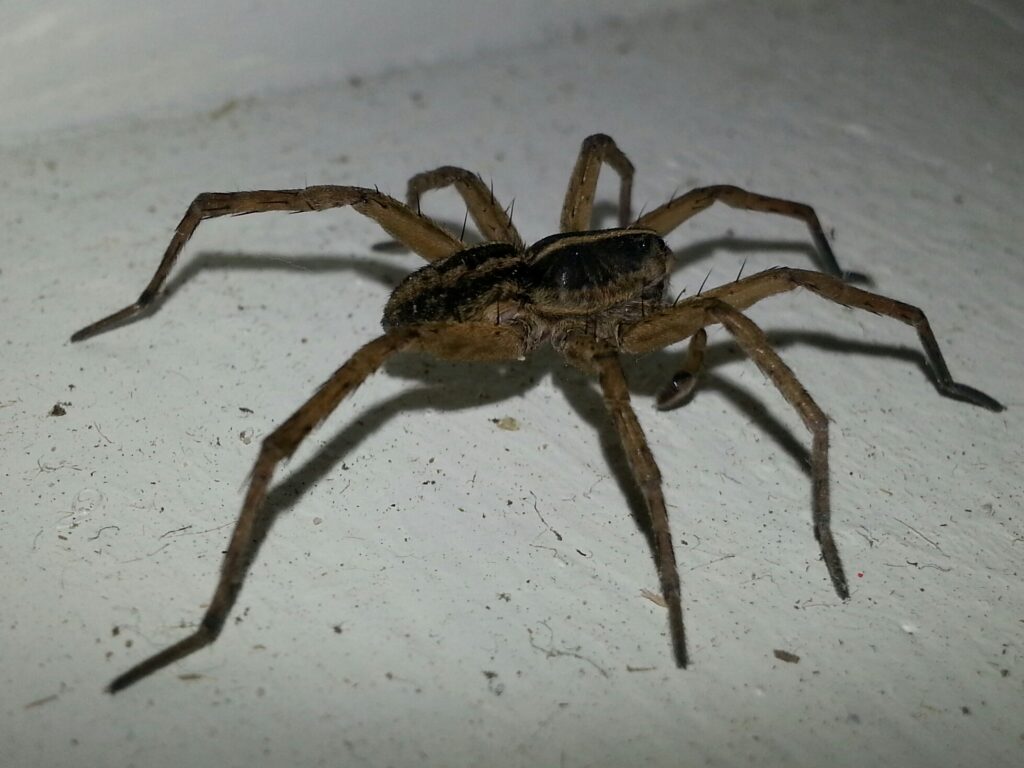 Carpenter ants are not just a nuisance but a potential threat to the structural integrity of your home. These industrious insects are notorious for their ability to hollow out wood as they create intricate nest galleries, often targeting damp or decaying wood. It's not uncommon for homeowners to discover these uninvited guests in areas like wooden decks, window frames, and attics.
If you're wondering, "do carpenter ants bite?" the answer is yes, though their bites are harmless to humans. However, the real concern lies in the extensive damage they can cause if left untreated. Detecting a carpenter ant infestation early is crucial. That's where Truly Nolen in Mississauga comes in. With their extensive expertise in identifying and addressing carpenter ant issues, they offer comprehensive insect treatment solutions to protect your home.
Throughout this guide, you'll gain insights on how to spot the signs of a carpenter ant infestation, why prompt action is essential, and the best practices for prevention. Let’s dive into the world of carpenter ants and arm you with the knowledge to keep your home safe and sound.
Carpenter ants are not just a nuisance but a potential threat to the structural integrity of your home. These industrious insects are notorious for their ability to hollow out wood as they create intricate nest galleries, often targeting damp or decaying wood. It's not uncommon for homeowners to discover these uninvited guests in areas like wooden decks, window frames, and attics.
If you're wondering, "do carpenter ants bite?" the answer is yes, though their bites are harmless to humans. However, the real concern lies in the extensive damage they can cause if left untreated. Detecting a carpenter ant infestation early is crucial. That's where Truly Nolen in Mississauga comes in. With their extensive expertise in identifying and addressing carpenter ant issues, they offer comprehensive insect treatment solutions to protect your home.
Throughout this guide, you'll gain insights on how to spot the signs of a carpenter ant infestation, why prompt action is essential, and the best practices for prevention. Let’s dive into the world of carpenter ants and arm you with the knowledge to keep your home safe and sound.
Common Hiding Places of Carpenter Ants in Homes
Carpenter ants are fascinating insects with distinctive characteristics making them stand out among their counterparts. Typically, they are larger than common household ants, with workers ranging from 1/4 to 1/2 inch in length. Their colouration varies from reddish-black to all-black, which helps in identifying them. These ants are nocturnal and most active during the night, foraging for food and moisture. One telltale sign of their presence is the small piles of wood shavings, often resembling sawdust, near their nesting areas. One unique aspect of carpenter ants is the role of the queen in colony expansion. Unlike other ants, the queen carpenter ant can live for up to 25 years, laying thousands of eggs over her lifetime. This longevity contributes to the establishment and growth of extensive colonies. The queen’s primary role is to reproduce and start new colonies, crucial for the survival and proliferation of the species. On the other hand, worker ants are responsible for building nests, foraging for food, and protecting the colony. It’s important to understand the critical differences between carpenter ants and other common ants we might encounter. While both types search for sustenance, carpenter ants have a unique tendency to hollow out wood to create their nests, which can compromise the structural integrity of our homes. This behaviour sets them apart and makes early detection and professional treatment paramount. Carpenter ants are experts at finding hidden spots within our homes to set up their nests, exploiting areas with moisture and decay. These elusive insects tend to favour places where water has compromised the wood, such as roof leaks, window sills, and pipes. Let's explore some of the typical locations they might inhabit, offering clues on where to look for an infestation. Moist wood areas, especially those subjected to consistent dampness, are prime real estate for these ants. Common trouble spots include places like wooden decking, behind bathroom tiles, and beneath sinks, where lingering moisture from leaks or spills provides a welcoming environment. Additionally, wall voids and enclosed areas like attics and crawl spaces, which can accumulate humidity, are popular nesting sites. These crafty intruders often gain entry through cracks and crevices in the foundation or by travelling along branches and utility lines that touch the exterior walls. Once inside, they leave subtle hints of their presence, such as tiny piles of sawdust-like frass – a byproduct of their wood tunnelling activities. Sometimes, the faint rustling sounds of their activity within your walls serve as an auditory alert, signalling a need for closer inspection.Addressing the Dangers of a Carpenter Ant Infestation
If we overlook the signs of carpenter ants, the structural damage to our home can be quite extensive. These insects carve out elaborate tunnels within our wooden fixtures and foundations, weakening the integrity of the entire structure. Over time, the consistent gnawing and burrowing can lead to sagging floors, compromised walls, and even ceilings that are no longer sturdy. What may start as a small, unnoticed presence can gradually turn into a problem that requires significant repairs and incur heavy costs. Catching the problem early can save us from facing such burdensome issues.Health Considerations: Do Carpenter Ants Bite?
While carpenter ants are primarily known for their knack for damaging wood, it’s also worth noting that they can bite. Although these bites are not venomous and generally harmless to humans, they can still cause a bit of discomfort. In most cases, they feel like a minor pinch or sting. It’s the mere thought of ants roaming inside our house that can be unsettling, affecting our peace of mind. Therefore, addressing their presence quickly not only protects the structure of our home but also ensures that we can live comfortably without worrying about unexpected bites.Avoiding Do-It Yourself Methods for Carpenter Ant Removal
While it might be tempting to tackle a carpenter ant infestation on your own, there are several limitations and potential dangers associated with DIY removal. As homeowners, we often underestimate how challenging it can be to effectively locate and eradicate these pests without professional expertise. One significant limitation is the complexity of their nesting habits. Carpenter ants often establish satellite colonies hidden deep within our homes, and finding the primary nest requires specialized knowledge and tools. Unlike more superficial insect issues, carpenter ants' nests can be in hard-to-reach places, such as inside walls, behind insulation, or within structural wood. Without the proper approach, we may only manage to deal with part of the problem, leaving the root of the infestation untouched to continue causing damage. Additionally, DIY methods seldom take into account the lifecycle of these pests. The long-lived queen can continue reproducing and expanding the colony if not correctly targeted. This means that while we might think we've resolved the issue with bait stations or sprays, we often only address the workers and not the source. Furthermore, improper use of treatments can pose health risks to ourselves and our families, particularly if potent chemicals are involved.Proactive Measures to Deter Future Raids
 Preventing ants from taking up residence in your home starts with proactive maintenance and awareness. Here are some steps you can take to make your living spaces less attractive to these wood-damaging pests, emphasizing the importance of our professional inspections and treatments.
Preventing ants from taking up residence in your home starts with proactive maintenance and awareness. Here are some steps you can take to make your living spaces less attractive to these wood-damaging pests, emphasizing the importance of our professional inspections and treatments.
- Seal Entry Points and Repair Damaged Areas
One of the first lines of defence is to seal any potential entry points around your home. Cracks in the foundation, gaps around windows and doors, and any holes in exterior walls can serve as convenient entrances. Regularly inspecting and repairing these areas can significantly reduce the likelihood of an infestation. It's essential to keep your home’s structure intact to deter these pests from gaining access.
- Control Moisture Levels
Moist environments are very inviting to ants. Ensuring that your home is well-ventilated and addressing leaks promptly can make a big difference. Pay close attention to areas like the basement, attic, and bathroom, where dampness is more likely to occur. Regularly cleaning gutters and ensuring proper drainage away from the house can also help keep these pests at bay.
- Keep Your Yard Maintained
A well-maintained yard can also play a crucial role in keeping ants away. Trim back tree branches and shrubs that touch your home to prevent these clever invaders from using them as bridges. Additionally, keep firewood and other wooden materials stored away from the home's exterior, as these can act as attractive nesting sites.
- Dispose of Food and Wood Debris
Ensure that food scraps are properly disposed of and that counters and floors are kept clean. Ants are attracted to food sources, so eliminating these can help discourage their presence. Similarly, promptly clear away any old wood or debris, as decaying wood can attract these unwelcome visitors.
- Regular Professional Inspections
Despite all these precautions, professional inspections can be invaluable. Our expert team at Truly Nolen provides thorough examinations of your property to ensure no corners are overlooked. This not only helps in identifying potential vulnerabilities but also in taking preemptive actions before any issue escalates.

